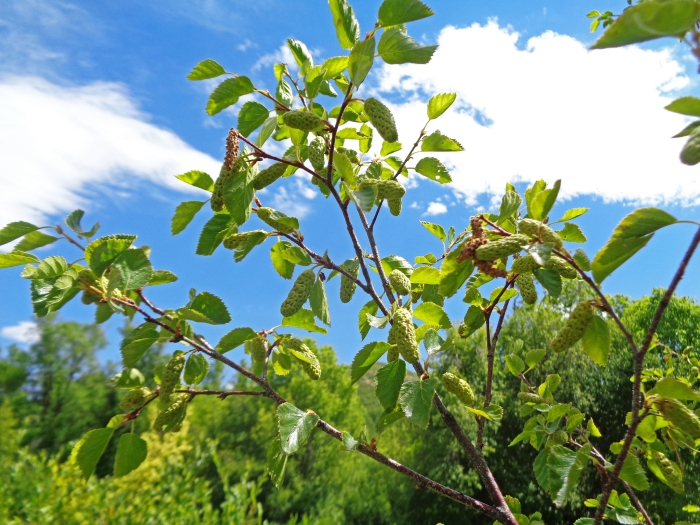Water Birch
(Betula occidentalis)
Water Birch (Betula occidentalis)
/
/

Andrey Zharkikh
CC BY 2.0
Image By:
Andrey Zharkikh
Recorded By:
Copyright:
CC BY 2.0
Copyright Notice:
Photo by: Andrey Zharkikh | License Type: CC BY 2.0 | License URL: https://creativecommons.org/licenses/by/2.0/ | Uploader: AndreyZharkikh | Publisher: Flickr |





























































Estimated Native Range
Summary
Betula occidentalis, commonly known as Water Birch or Red Birch, is a deciduous shrub or small tree native to riparian zones, stream banks, and moist woodlands in western North America. Its range extends from Yukon and Northwestern Ontario in Canada, through the western United States, including eastern Washington to western North Dakota, and south to eastern California, northern Arizona, northern New Mexico, and southwestern Alaska. It typically grows to a height of 14 meters (46 feet) and can have a trunk up to 25 centimeters (10 inches) in diameter. The Water Birch has a tendency for epicormic growth, resulting in many small limbs sprouting from the trunk and a wood texture full of small knots. Its bark is a distinctive dark red-brown to blackish color, smooth in texture, and does not exfoliate.
The Water Birch is valued for its adaptability to wet conditions and is often used in riparian restoration projects. It provides erosion control and habitat for wildlife. In the garden, it is appreciated for its attractive bark and ability to thrive in moist areas where other plants might struggle. It is suitable for full sun to part shade and can tolerate a range of water conditions, from high to moderate, and various soil types with different drainage speeds. While it is not commonly afflicted by serious diseases or pests, it can be susceptible to birch leafminer and bronze birch borer. Gardeners should be aware of these potential issues and monitor for signs of infestation.CC BY-SA 4.0
The Water Birch is valued for its adaptability to wet conditions and is often used in riparian restoration projects. It provides erosion control and habitat for wildlife. In the garden, it is appreciated for its attractive bark and ability to thrive in moist areas where other plants might struggle. It is suitable for full sun to part shade and can tolerate a range of water conditions, from high to moderate, and various soil types with different drainage speeds. While it is not commonly afflicted by serious diseases or pests, it can be susceptible to birch leafminer and bronze birch borer. Gardeners should be aware of these potential issues and monitor for signs of infestation.CC BY-SA 4.0
Plant Description
- Plant Type: Tree, Shrub
- Height: 10-25 feet
- Width: 10-30 feet
- Growth Rate: Rapid
- Flower Color: N/A
- Flowering Season: Spring
- Leaf Retention: Deciduous
Growth Requirements
- Sun: Full Sun, Part Shade
- Water: High
- Drainage: Fast, Medium, Slow
Common Uses
Bird Garden, Butterfly Garden, Deer Resistant, Erosion Control, Potted Plant, Rabbit Resistant
Natural Habitat
Native to riparian zones, stream banks, and moist woodlands in western North America
Other Names
Common Names: River Birch, Black Birch, Mountain Birch, Red Birch, Western Birch, Bouleau Fontinal, Bouleau Occidental
Scientific Names: , Betula occidentalis, Betula fontinalis, Betula occidentalis var. occidentalis, Betula papyrifera var. occidentalis, Betula occidentalis var. inopina, Betula elrodiana, Betula beeniana, Betula papyrifera subsp. occidentalis, Betula alba f. occidentalis
GBIF Accepted Name: Betula occidentalis Hook.